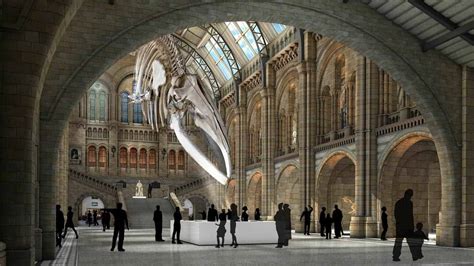As you step into the grand atrium of the Natural History Museum, the cacophony of sounds and the kaleidoscope of exhibits can be overwhelming. With over 80 million specimens in its collection, the museum is a treasure trove of natural wonders, each one telling a unique story of the planet’s history. To navigate this vast repository of knowledge, an insider’s guide is essential. In this article, we will delve into the hidden gems, the must-see exhibits, and the expert tips that will elevate your museum experience from merely enjoyable to truly unforgettable.
The Evolution of Life on Earth: A Historical Perspective
The Natural History Museum is perhaps most famous for its dinosaur fossils, and for good reason. The dinosaur gallery is home to an almost complete skeleton of a Tyrannosaurus Rex, alongside other prehistoric giants like the Triceratops and the Stegosaurus. However, the story of life on Earth begins much earlier, with the simplest organisms that paved the way for the diversity we see today. The museum’s collection includes some of the oldest known fossils, dating back over 3.5 billion years, offering a glimpse into the primordial oceans where life first emerged.
Exploring the Ages: From Cambrian to Quaternary
- Cambrian Explosion: This period, around 541 million years ago, saw a rapid diversification of life forms, with many major animal groups appearing in the fossil record for the first time. Exhibits featuring trilobites and early arthropods give insight into this pivotal moment in Earth’s history.
- Triassic, Jurassic, and Cretaceous Periods: These ages are often referred to as the Mesozoic Era or the Age of Reptiles, during which dinosaurs and other reptiles dominated Earth’s landscapes. The museum’s vast collection of dinosaur fossils and artifacts brings this era to life.
- Quaternary Period: The most recent geological period, spanning from about 2.58 million years ago to the present, saw the emergence and dominance of humans. Exhibits on early human ancestors, such as Homo sapiens, Homo erectus, and Neanderthals, provide a fascinating look at human evolution.
Behind the Scenes: Conservation and Research
Beyond the exhibits, the Natural History Museum is also a thriving research institution. Scientists here are involved in cutting-edge studies on biodiversity, climate change, and the conservation of species. The museum’s collections are not just for display; they are also a valuable resource for scientific research. For example, the study of fossils and extinct species can provide crucial insights into the impacts of climate change and how species adapt to their environments.
The Role of Museums in Conservation Efforts
Museums like the Natural History Museum play a critical role in conservation. They not only serve as educational institutions, raising awareness about the importance of biodiversity and the threats faced by many species, but they are also involved in active conservation efforts. From studying the genetic diversity of endangered species to advising on policy and conservation practices, the impact of these institutions extends far beyond their walls.
Insider Tips for Visiting the Museum
Visiting the Natural History Museum can be a daunting task, given its vast size and the wealth of information on display. Here are a few insider tips to help you make the most of your visit:
- Plan Your Visit: With so much to see, it’s a good idea to plan which exhibits you want to prioritize. The museum offers guided tours for a more in-depth experience, which can be particularly beneficial for those interested in specific areas, such as dinosaur fossils or the giant squid.
- Less Busy Times: Consider visiting during the week or later in the day to avoid the crowds that flock to the museum on weekends and school holidays.
- Interactive Exhibits: Don’t miss the interactive displays and hands-on activities scattered throughout the museum. These are not only entertaining but also provide a unique learning experience, especially for children.
- Special Exhibitions: Keep an eye out for temporary exhibitions, which often feature items not normally on display or collaborative efforts with other museums around the world.
FAQs
What are the museum's opening hours?
+The Natural History Museum is open daily from 10:00 AM to 5:30 PM, with last entry at 4:30 PM. However, it's always a good idea to check the official website for any special closures or extended hours.
Are the exhibits suitable for young children?
+Yes, the museum is very child-friendly, with many exhibits designed to be interactive and engaging for young minds. There are also dedicated areas for children, such as the Investigate Centre, where they can conduct their own science experiments.
Can I take photos or videos inside the museum?
+For personal, non-commercial use, yes, you can take photos and videos. However, flash, tripods, and commercial photography require prior permission from the museum. It's also considerate to be mindful of other visitors when taking photos.
Conclusion
The Natural History Museum is a place where the boundaries of time and space are transcended, where the wonders of the natural world are laid bare, and where the story of our planet is told in all its complexity. Whether you are a seasoned naturalist, a curious child, or simply someone looking to deepen your understanding of the world around you, the museum has something to offer. With its combination of engaging exhibits, cutting-edge research, and commitment to education and conservation, it stands as a beacon of knowledge and inspiration, reminding us of our place within the grand narrative of life on Earth.



